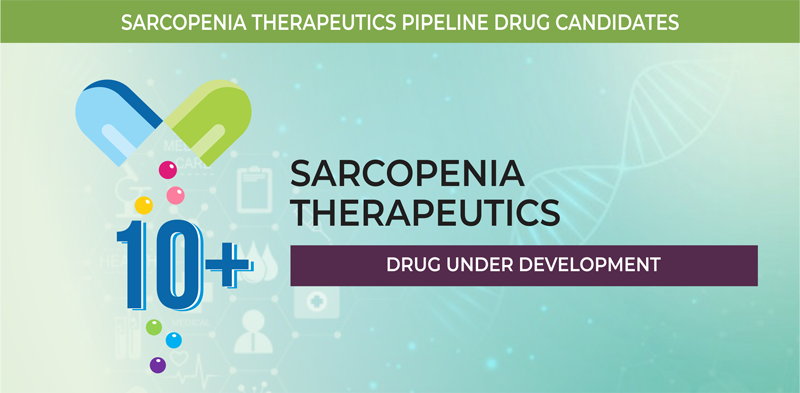
| Report Code: PP10263 | Published: August 2019 | Pages: 300+ | Available format: |
| Therapeutic Area(s): | Musculoskeletal | Report Type: Indication Pipeline Reports |
Overview
Sarcopenia is an age-related disease, leading to significant loss of muscles after a particular age. Though there is a constant loss of muscles in the body after the age of 30, but it starts accelerating when a patient approaches seventh decade of the life. Physically active people are also susceptible to this, but it tends to affect inactive people more. Falls and fractures become more common as a result of this. Some suspected reasons for the disease are reduction in nerve cells; lowering down of concentrations of some hormones (growth hormone, testosterone, and insulin-like growth factor); decreasing ability of protein to energy conversion; and absence of sufficient calories or proteins.

Doctors often diagnose sarcopenia based on symptoms an individual report. In some cases, a doctor may recommend a dual energy X-ray absorptiometry (DXA) and a walking speed test to make a diagnosis. Off-label medications prescribed for the treatment of sarcopenia include urocortin II, hormone replacement therapy (HRT), testosterone supplements, and growth hormone supplements. Apart from medications, exercises such as resistance and strength training tend to strengthen the muscle and avoid sarcopenia.
In spite of the fact that no drug has been approved till now for the treatment of sarcopenia, yet a number of drug manufacturers are actively involved in the development of sarcopenia therapeutics.
Positive clinical trial results and adoption of collaboration strategies are enhancing sarcopenia therapeutics pipeline. Moreover, the issuance of patents helps in achieving different milestones in the form of grants and designations from regulatory bodies and institutes, including the U.S. Food and Drug Administration (USFDA), the European Medicines Agency (EMA), and the National Institutes of Health (NIH).
Pipeline Analysis
As of March 2019, the sarcopenia therapeutics pipeline comprised 10+ drugs in different stages of development.
Epidemiology Analysis
The report provides epidemiology forecast of sarcopenia for seven major markets, such as the U.S., Japan, and EU5 countries (the U.K., Germany, France, Italy, and Spain). It covers prevalent population and treated patient population for the period 2016–2028. According to an article published in Physiotherapy in Movimento in May 2018, the prevalence of sarcopenia is more than 33% throughout the world.
Competitive Landscape
Some of the key players involved in the development of sarcopenia therapeutics are Novartis AG, Biophytis SAS, Merck & Co. Inc., and Vibe Pharmaceuticals LLC.
Report Insights
Some highlights of the report “Sarcopenia Therapeutics – Pipeline Analysis 2019, Clinical Trials and Results, Patents, Designations, Collaborations, and Other Developments” have been mentioned below: